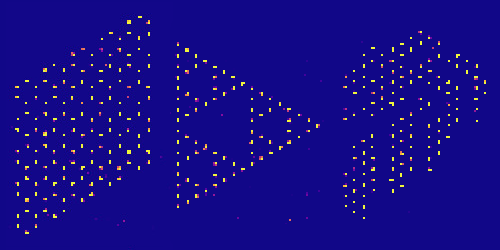A Better Production Line for Atom Arrays
Large, defect-free atom arrays are a promising platform for quantum computing and quantum simulation. But their production is often hindered by atom losses that occur during assembly. Now Huanqian Loh and her colleagues at the National University of Singapore have developed an algorithm that limits these losses by speeding up the manufacturing process [1]. They show that their algorithm can be used to make a wide range of pristine arrays containing hundreds of atoms.
Typically, an atom array is populated stochastically before the atoms are moved into the desired configuration using mobile light traps called optical tweezers. The more sequential movements that are required during this process, the greater the likelihood that the final configuration will include defects—empty lattice sites that should be occupied. The new algorithm suppresses such losses by limiting how many times the atoms need to be moved while avoiding atom collisions. Using this algorithm, the average number of moves scales as the square root of the target array size, unlike conventional methods in which this scaling is at best linear. As a result, at room temperature, the probability that a 225-atom array has zero defects is as high as 33%, which greatly improves on previous demonstrations.
Loh and her colleagues used their algorithm to produce large, defect-free arrays with shapes ranging from a honeycomb lattice to a lion’s head. They say that the algorithm could be applied to any target array geometry that has an underlying periodic structure and to most setups, including those that involve molecules or multiple species of atoms. Moreover, the team expects that the probability of an array having zero defects will be further improved in the future.
–Ryan Wilkinson
Ryan Wilkinson is a Corresponding Editor for Physics Magazine based in Durham, UK.
References
- W. Tian et al., “Parallel assembly of arbitrary defect-free atom arrays with a multitweezer algorithm,” Phys. Rev. Appl. 19, 034048 (2023).




